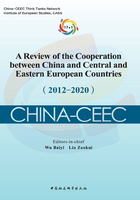
6. Advancing Financial Integration by Closer Financial Cooperation
China-CEEC financial cooperation is diverse in forms and rich in content, and has provided strong support for China-CEEC Cooperation.
First, China has initiated or push ahead with the creation of a series of financial cooperation instruments. In 2012 when China-CEEC Cooperation was launched, a US$10 billion special credit line was announced, with a certain share of preferential loans and a focus on infrastructure, high-tech and green economy projects. In 2013, the China-CEEC Investment Cooperation Fund was launched. So far the Fund has launched two phases, with the first phase closed at a value of 435 million US dollars and the first part of the second phase 800 million. In 2018, the second phase announced its intention to raise one billion US dollars. In 2016, the China-CEEC Financial Holding Company was set up to ensure better financing.
Second, Chinese and CEEC financial institutions have been engaged in multiple forms of cooperation. Poland, Hungary and Romania joined the Asian Infrastructure Investment Bank initiated by China, with Poland being one of the founding members. Bank of China, the Industrial and Commercial Bank of China and China Construction Bank established their subsidiaries in Poland, Hungary, the Czech Republic, Serbia and Romania. By the end of 2019, the number of their CEEC subsidiaries had reached 11 (see Table 2). In October 2017, OTP Bank Hungary established its representative office in Beijing. In November 2017, initiated by China Development Bank, the China-CEEC Inter-bank Association was established. The Association currently has 14 member banks. China Development Banks plans to provide member banks an equivalent of 2 billion euro’s worth of development loans in five years to finance priority projects and channel fund to the weakest links and bottleneck areas of the CEEC economy, such as infrastructure, power, telecommunications, industrial parks, agriculture and high and new technologies. According to the Sofia Guidelines for China-CEEC Cooperation published in July 2018, the parties support the establishment of a China-CEEC fintech coordination center in Lithuania, and the first China-CEEC High-level Forum on Fintech was held in Lithuania in 2019.
Table 2 Subsidiaries of Chinese Banks in CEECs

Third, China and CEECs have carried out various forms of currency cooperation. China has signed currency swap agreements with Hungary, Albania and Serbia, and plans to renew its agreement with Hungary when the current one is expired, with a total value of 40 billion RMB yuan (see Table 3). In June 2015, Bank of China and the National Bank of Hungary signed a memorandum on RMB settlement and clearing in Hungary, where Bank of China Hungary Branch, as authorized by Bank of China, became the first clearing bank for RMB business that China set up in CEECs. In 2016, one of the largest CEEC banks UniCredit S.P.A. Hungary Branch transferred its RMB account from Hong Kong to Bank of China Hungary Branch, making the Branch its RMB clearing services provider. In 2017, Bank of China (Hungary) Close Ltd. issued a forint-RMB debit card, the first RMB card Bank of China ever issued in Europe. On 20 June 2016, Bank of China signed a Memorandum of Understanding on panda bonds issuance with Poland’s Ministry of Finance. This was the first time that the Polish government issued bonds in RMB, making it the first sovereign European state that ever entered the Chinese Mainland market to issue panda bonds. In 2016, entrusted by the Hungarian Government Debt Management Agency, Bank of China Hungary Branch issued a one-billion-RMB Dim Sum bonds in Hong Kong, the first RMB bonds issued by one of the CEECs. In 2017, Hungary issued a one billion RMB panda bonds at China’s inter-bank bond market.
Table 3 Currency Swap Agreements between China and CEECs
